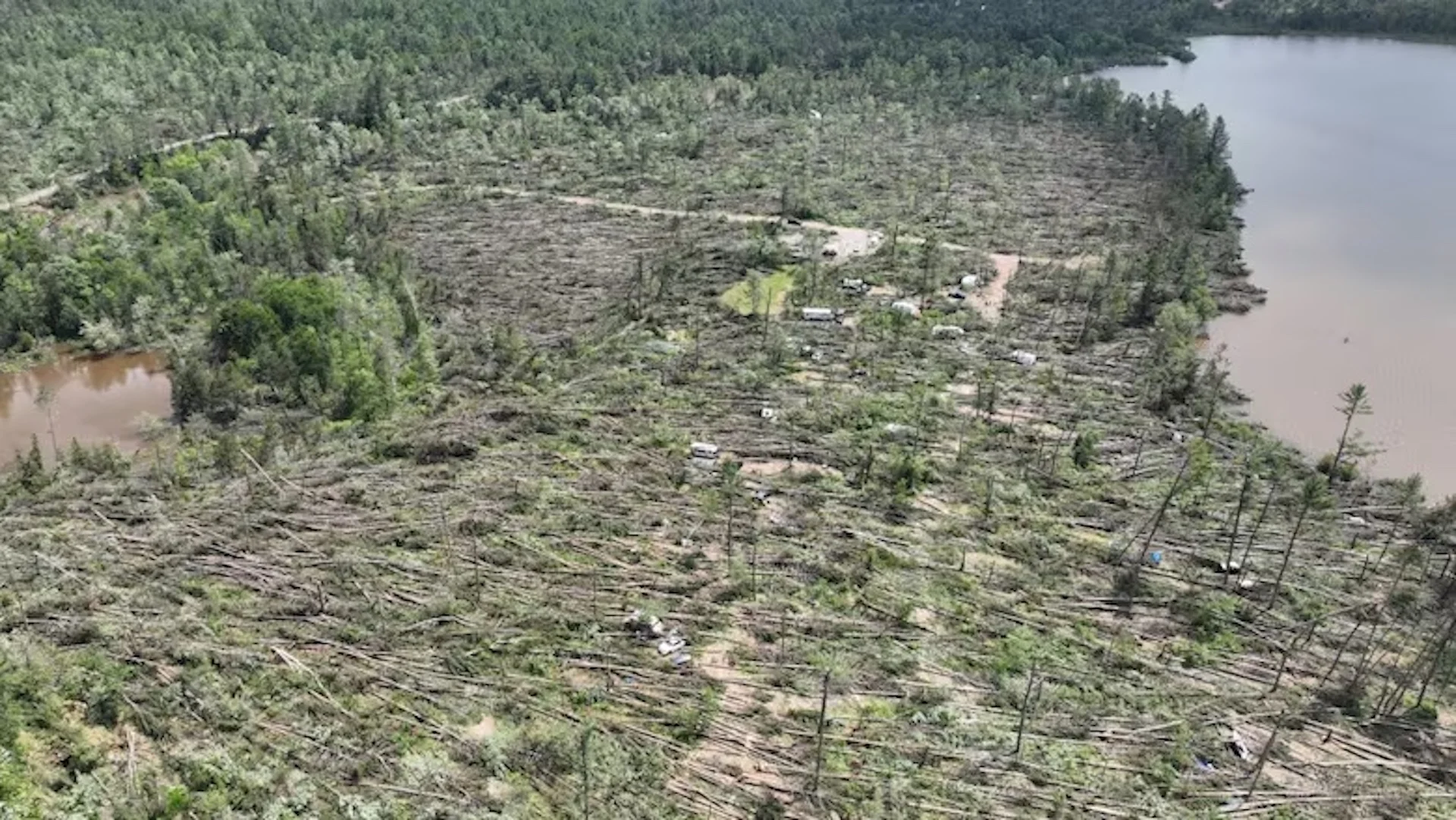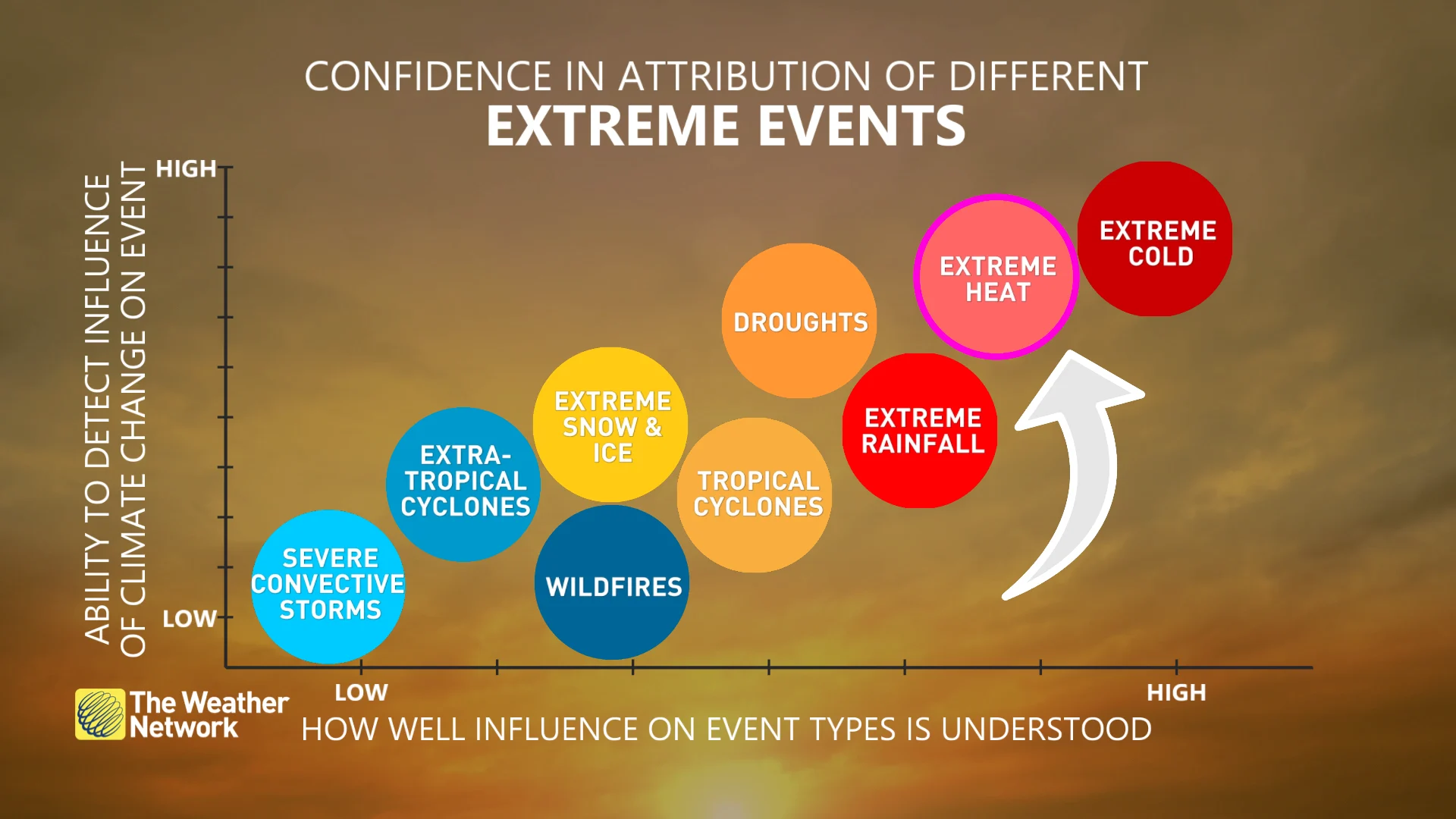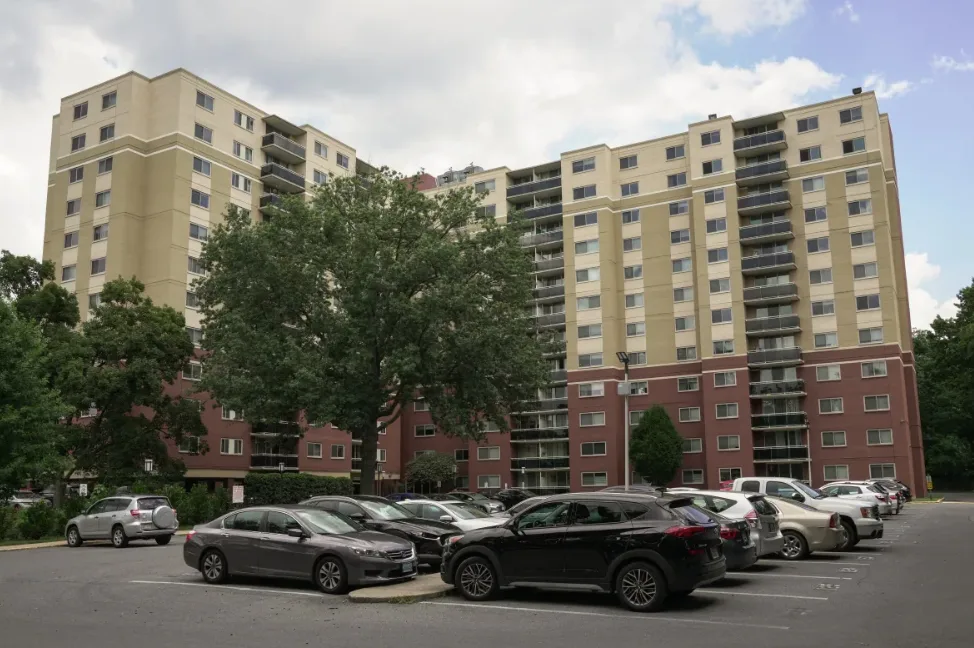
Climate-proofing homes more important than ever, say experts
A downburst that touched down on Samuel de Champlain Provincial Park on June 21 downed thousands of trees.
Had the storm hit an urban area, the high winds could have caused significant damage to buildings.
SEE ALSO: Tornado reported in southern Ontario on Monday afternoon
Connell Miller, the acting director of Western University's Northern Tornadoes Projects, said destructive storms are becoming more common because of climate change. But small changes to Ontario's Building Code could help protect people's homes from the powerful winds they produce.
"We think for about $200 to $300 in parts and labour on new building house construction, we can prevent these roofs from being ripped off," Miller said.

Barrie, Ont., tornado in July 2021. (Mark Robinson/The Weather Network)
"Once a roof gets ripped off a house, the house is essentially a write off at that point."
Miller said all that needs to change is for 12-inch screws to be used in wall-to-roof connections, instead of nails.
Reinforcing those connections, he said, would allow homes to withstand 95 per cent of the tornadoes that touch down in Canada.
Flooding and wildfires pose greatest risk
But while strong winds can threaten homes, heavy rainfall and wildfires are responsible for the bulk of climate change-related damage.
Blair Feltmate leads the University of Waterloo's Intact Centre on Climate Adaptation, which looks at ways to mitigate risks from flooding, wildfires and extreme heat to people's homes and communities.
Feltmate said that from 1983 to 2008, home insurance claims in Canada related to catastrophic weather events – such as flooding and wildfire damage – would typically total $250 million to $450 million in a given year.

Jasper, Alta., townsite after wildfire in August 2024. (Connor O'Donovan/The Weather Network)
But in the last 15 years, that yearly average has shot up to around $2.8 billion in insurance claims.
"Things are getting worse faster," Feltmate said.
There are now 1.5 million homes in Canada that no longer qualify for basement flooding insurance because they are located in floodplains.
Feltmate said provincial building codes have just started to recognize these risks in recent years. But legislation is slow to update.
The Intact Centre on Climate Adaptation now publishes infographics that municipalities can freely share with residents that give homeowners tips on how to protect their houses from flooding and wildfires.

Rob Fleury is a homebuilder based in Sudbury, Ont., who is certified in passive house design. (Jonathan Migneault/CBC)
Some of these actions, said Feltmate, are free or cost very little.
If a home has a sump pump in the basement, for example, Feltmate said it's important to test if it works before there's a big storm. Sump pumps should also be connected to battery power or a generator in case of a power outage, he added.
Protecting homes from wildfires includes steps such as keeping shrubs at least 1.5 metres from the outside of the house and replacing wooden fences with fireproof materials.
"Over the last, I would say five to eight years, we've developed very good guidance that's practical, meaningful and cost effective that gives direction on how to prepare homes and communities for flooding and wildfire," Feltmate said.
Building more efficient homes
Extreme heat is another climate-related risk.
According to Statistics Canada, "extreme heat events during the period from 2000 to 2020 were found to be associated with approximately 670 excess non-accidental deaths and 230 excess deaths due to cardiovascular and respiratory causes."

Rob Fleury, the owner of HP Home Design in Sudbury, Ont., is certified in passive house design, which is a standard for more energy efficient homes.
Through better insulation, strategic window placement and placing large overhangs over south-facing exterior walls, Fleury said it's possible to reduce reliance on air conditioning and cut energy costs by a significant margin.
But in northern Ontario, passive houses are 20 to 25 per cent more expensive to build than homes that don't exceed the requirements of the Ontario Building Code.

(Jason Burles/CBC)
"You're putting upfront costs in the beginning and recouping those costs over time," Fleury said.
Those higher upfront costs have meant lower demand for passive houses.
Fleury said they only account for around five per cent of his business. But he hopes building more pre-fabricated homes could eventually help lower those costs.
"I think the challenge would be having the factories available in the location so that you're not trucking, you know, hours and hours across the province," he said.
Thumbnail courtesy of Northern Tornadoes Project via CBC.
The story was originally written by Jonathan Migneault and published for CBC News.
